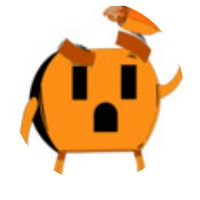What Is the Difference between a GFI and GFCI?

A common misconception in the electrical world is the difference between a GFCI receptacle and a GFI outlet. Simply put, there is no difference.
GFI vs GFCI
When discussing GFCI receptacle, the terms ground fault circuit interrupter GFCI outlets or ground fault interrupter (GFI) are interchangeable.
This can be confusing as many electricians use the term GFCI receptacle rather than GFI receptacle when speaking.
Recommended Products
What is a GFCI Receptacle?
Ground Fault Circuit Interrupters GFCIs are electrical devices with built-in breakers to lower risks of electrical shock when using appliances. Wet or damp areas, such as bathrooms and kitchens, are best for GFCI installation. GFCI receptacles respond to ground faults in milliseconds to stop exposure of hazardous electric currents to the human body.
You can wire GFCI in one or multiple locations based on your needs. But, receptacles protect individual outlets. This means that GFCI outlets with wiring for a single location only protect one outlet.
GFCI protection is required by the National Electric Code for most appliances that also include:
- Garages
- Crawl spaces
- Unfinished basements
- Laundry or utility sinks
- Underwater pool lighting
3 Types of GFCI Devices
GFCIs come in three types meant for different everyday needs. Each type provides varying levels of electric shock prevention depending on intended use.
A GFI can be one of the following:
- GFCI Receptacle: The most common type of ground fault device used to protect a single outlet from electrical shock. GFCI outlet receptacles are best suited for large appliances to avoid circuit breaker overload. GFI receptacles consists of a test button and a red reset button inserted into the faceplate. Press the test button to check the GFCI outlet after a ground fault occurs. Press the reset button to restart the system and ensure proper operation.
- GFCI Circuit breaker: Provide GFI protection to an entire circuit rather than a single outlet. GFI electric circuit breakers install in service panels to monitor the current flowing through the circuit. Breakers are convenient in spaces where individual receptacles are more difficult to install. GFCI breakers make the most sense when all outlets on a single circuit require GFCI protection.
- Portable GFCI: Temporary devices that protect from ground faults, electrical shocks, and burns. For example, portable GFCIs are perfect to use outdoors, in garages, docks, and boats. Additionally, GFCIs offer portable protection for electric garden equipment such as mowers, hedge trimmers, drills, saws and sanders. Temporary devices are also useful in areas without electrical systems, such as boat yards and old sheds. However, do not use temporary GFCI as primary outlets in your home or office.
HomElectrical offers portable GFIs as outlets, extension cord attachments or power strips for easy carrying.
What is a Ground Fault?
The main task of a GFI is to detect ground faults in electrical outlets. A ground fault occurs when an electric current flows through an unplanned path, rapidly increasing the flow of charge to the location. Ground faults reduce the safety of the appliance if left unattended.
What happens during Ground Fault Detection?
When the GFCI detects a ground fault an internal trip mechanism activates, cutting off power supply to the outlet. After resolving the electrical issue, push the reset button on the outlet to restore power.
On the other hand, GFCI circuit breakers cut off power supply to all outlets protected by the system. This process stops currents from flowing through the circuit and eliminates risk of fire or shocking hazards. Unlike GFCI outlets, GFI breakers need manual resetting at the main service panel after ground fault detection.
The ground fault protection from gfci receptacles keeps homes and businesses safe from shocks and burns. To secure your home, we suggest that you install a gfci or gfci electrical panel. Any light fixtures plugged into a GFI is more protected from moisture, power outage, or power overload damage.
What is AFCI vs GFCI?
Unlike the gfci/gfi difference, GFCI and AFCI are not the same. GFCI and AFCI both protect outlets from damage but at varying degrees. AFCI stop fires, while GFCI stop electric shock.
Arc fault circuit interrupters (AFCI) work to prevent electric fires. When electricity leaks from wires it can start fast spreading fires. Since wire fires start behind walls, they are more damaging and deadly. After a wire leak, the AFCI shuts off power before the wires overheat.
GFCI detect electric current flow in hot and neutral wires. If the current changes at all, the GFCI cuts off power supply to prevent shocks, burns and electrocution.
Recommended Reading
AFCIs and GFCIs are both NEC requirements to increase the safety and reduce the risk of injury within buildings. Read to learn more about the differences between the two and the NEC requirements for installation.
GFCI stands for Ground Fault Circuit Interrupter, which shuts off if it detects a current flowing down the wrong path. Read our blog to learn all about GFCIs and when and why you should use them.
Effective June 29, 2015, UL revised their UL 943 Standard for Safety for GFCIs. This revision makes it mandatory for GFCIs to feature a self-test and reverse line-load misfire function.
Explore the crucial aspects of GFCI outlets with our essential guide. From understanding their function to practical tips, this guide is your go-to resource for navigating the world of GFCI outlets.
Recommended Products
Receive special deals and more, right to your inbox
Receive special deals and more, right to your inbox








.jpg&w=500&q=75)
